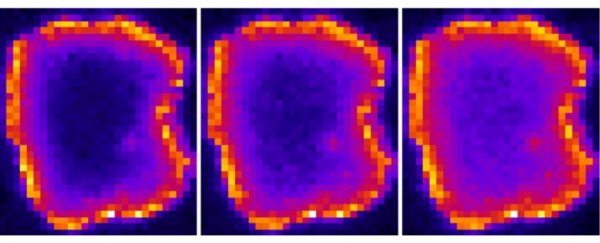New images of the Majorana fermion have brought physicists a step closer to harnessing the mysterious objects for quantum computing.
These strange objects - particles that acts as their own antiparticles - have a vast as-yet untapped potential to act as qubits, the quantum bits that are the basic units of information in a quantum computer.
They're equivalent to binary bits in a traditional computer. But, where regular bits can represent a 1 or a 0, qubits can be either 1, 0 or both at the same time, a state known as quantum superposition. Quantum superposition is actually pretty hard to maintain, although we're getting better at it.
This is where Majorana quasiparticles come in. These are excitations in the collective behaviour of electrons that act like Majorana fermions, and they have a number of properties that make them an attractive candidate for qubits.
Normally, a particle and an antiparticle will annihilate each other, but entangled Majorana quasiparticles produced by splitting an electron into two halves are surprisingly stable. In addition, they remember how they've been moved around, a property that could be exploited for storing information.
But the quasiparticles have to remain separated by a sufficient distance. This can be done with a special nanowire, but a team of physicists at the University of Illinois at Chicago and the University of Hamburg in Germany have taken a different approach.
They've started with a rhenium superconductor, a material that conducts electricity with zero resistance when supercooled to around 6 Kelvin (–267°C; 449°F).
On top of these superconductors, the researchers deposited nanoscale islands of single layers of magnetic iron atoms. This creates what is known as a topological superconductor - that is, a superconductor that contains a topological knot.
"This topological knot is similar to the hole in a donut," explained physicist Dirk Morr of the University of Illinois at Chicago.
"You can deform the donut into a coffee mug without losing the hole, but if you want to destroy the hole, you have to do something pretty dramatic, such as eating the donut."
When electrons flow through the superconductor, the team predicted that Majorana fermions would appear in a one-dimensional mode at the edges of the iron islands - around the so-called donut hole. And that by using a scanning tunneling microscope - an instrument used for imaging surfaces at the atomic level - they would see this visualised as a bright line.
Sure enough, a bright line showed up.
It's not the first time Majorana fermions have been imaged, but it does represent a step forward. And just last month, a different team of researchers revealed that they had been able to turn Majorana quasiparticles on and off.
But being able to visualise these particles, the researchers said, brings us closer to using them as qubits.
"The next step will be to figure out how we can quantum engineer these Majorana qubits on quantum chips and manipulate them to obtain an exponential increase in our computing power," Morr said.
The research has been published in Science Advances.
